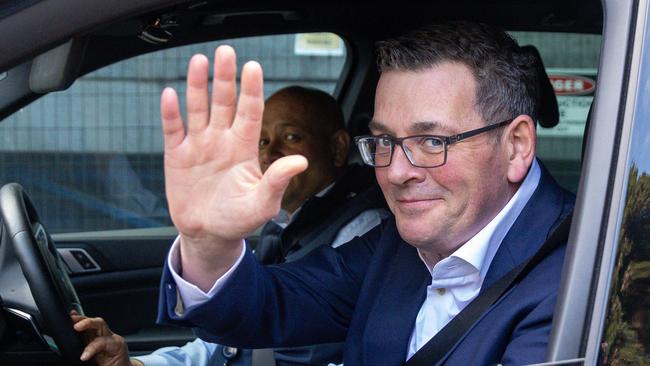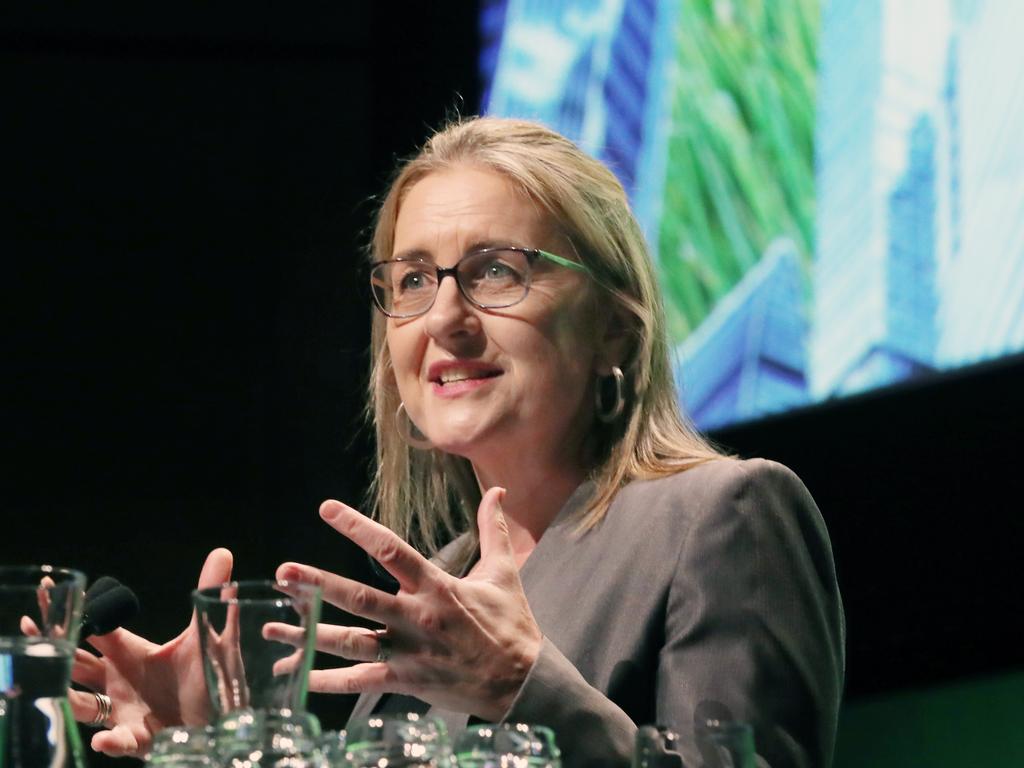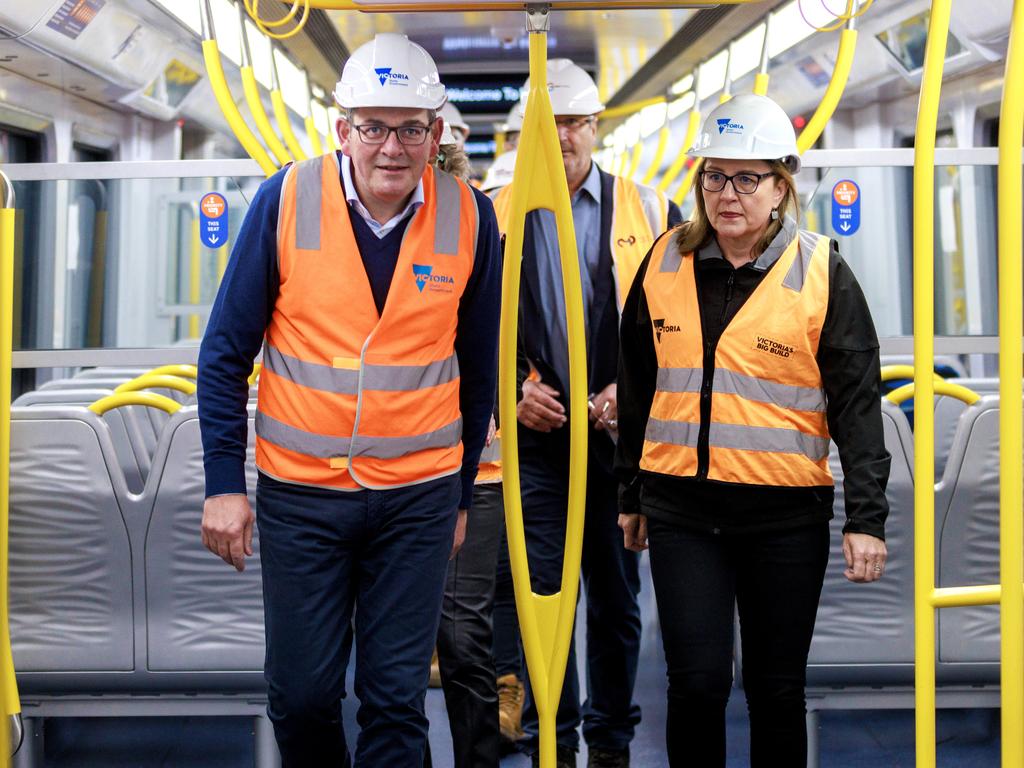‘Bureaucrat state’ of Victoria caught in public sector debt grip
Experts warn Victoria’s bloated public service will make it harder to repair the state’s shattered budget and pay down the highest debt levels in the country.

The number of Victorian government employees has jumped by 60 per cent over the past 15 years and at double the pace of population growth, prompting experts to warn the bloated public service will make it harder to repair the state’s shattered budget and pay down the highest debt levels in the country.
The rate of growth in Victorian state workers far outstrips the experience of NSW, where consecutive Liberal governments helped contain the increase in headcount to 28 per cent between 2008 and 2023, not far above a 20 per cent rise in population over the period, an analysis of Australian Bureau of Statistics figures shows.
Growth in the public sector workforce has also been large in Queensland and Western Australia, the data shows, although the roughly 40 per cent increase since 2008 in both states (against population growth of about 30 per cent) still falls far short of the Victorian figures.
Boosted spending on Victoria’s public service has produced higher staffing per capita in key services such as education and policing, but the additional funding has produced a mixed report card on whether Victorians experience better services or living standards than other states.
S&P Global Ratings analyst Anthony Walker said Victoria’s wages bill as measured in budget cash flows has risen steadily since the Labor government came to power in 2014, jumping by 65 per cent between 2015 and 2023.
Mr Walker said the global credit ratings agency had been warning Victoria’s government since 2016 that “we were concerned about the overall growth in the wages bill, which was being masked by very strong migration and that was driving revenue growth”.
“Our concern was that if revenues did slow down, the wages bill would be very difficult for the government to address,” he said.
Mr Walker said that “baking in” much higher spending on public servant salaries had undermined the state’s fiscal resilience, which was exposed when the pandemic hit.
“At that stage we were not predicting Covid, but this was why we had a two-notch downgrade in Victoria (in December 2020 against a smaller downgrade in NSW) – because of the persistent increase in employee expense in Victoria compared to other states,” he said.
Mr Walker said Victoria was in a weaker fiscal position than other states, and that “the fiscal recovery does require a lot of savings measures, including headcount reductions”.
The annual average rise of 7.2 per cent a year in state employees’ total wages contrasted sharply with Victoria’s most recent budget projections that the wages bill would only climb by 3 per cent per annum in the forward estimates.
“They have for a number of years said they would get on top of the wage bill and they have really struggled to do that. Notably, Victoria’s May budget included plans to cut as many as 4000 staff from a Victorian public service of about 55,000 people,” Mr Walker said.
“These are back-office staff, not teachers. But a reduction of about 10 per cent is a very large number. It’s not the first time they have forecast (a much slower rate of growth in wages) and failed to achieve it.”
Independent economist Saul Eslake said the political persuasions of the governments in the country’s two most populous states over the past 15 years explained the wide gap between growth in state employees in NSW and Victoria. “The most obvious explanation is you’ve had a long period of Labor rule in Victoria, and 12 years of Liberal rule in NSW,” he said.
Mr Eslake said that almost all of the growth in government sector workers in Victoria happened under former Labor premier Daniel Andrews, who took power in 2014 before stepping down last September.
“The most charitable interpretation is they (the Victorian government) have prioritised the delivery of public services in education and health and the police, and these are all employee-intensive activities,” Mr Eslake said.
“A less charitable interpretation might put it down to the significant influence public sector unions wield in the Victorian Labor Party.”
With a richer and older population, demand for services such as education, health and aged care are rising, putting more pressure on states and territories.
Mr Eslake said there was “no hard and fast rule” about the “right” number of state workers.
“Economically there is no right or wrong – Scandinavian countries collect more than 50 per cent in GDP in taxes, and they certainly haven’t performed economically worse than countries that collect a lot less in taxes,” he said.
Mr Eslake added: “If you really believe that the people want more public services, then the fiscally responsible thing to do is raise taxes.
“Employing a lot of public servants and paying them with money from taxation is, fiscally, not a bad thing. Employing a lot of public servants and paying them with borrowed money, however, is an unequivocally bad thing.”
The effectiveness of increased spending on high state government headcounts is hard to measure, but a review of the Productivity Commission’s rolling reports on government services suggests the additional spending has not created clearly superior outcomes for Victorian residents, compared with other states.
As at June 2022, there were 313 “operational staff” per 100,000 people in Victoria’s police force, well above the rate of 239 in NSW. In Queensland and Western Australian there were 285 and 282 operational police, respectively, per 100,000 people.
But the rate of physical assaults per 100,000 residents in Victoria was 1840 in 2021-22, according to best estimates quoted by the commission, higher than the 1540 assaults per 100,000 in NSW, although better than the roughly 2300 rate in Queensland and Western Australia.
In health, the availability of public hospital beds was also worse in Victoria than in the other states, at 2.2 beds per 1000 Victorians, versus an equivalent rate of 2.6 in NSW, 2.5 in Queensland, and 2.3 in Western Australia.
Ambulance wait times are not directly comparable between all states, but the proportion of public hospital emergency patients seen on time in Victoria is the lowest among the three big east coast states – at 63 per cent of patients, against 68 per cent in Queensland and 77 per cent of patients in NSW.
Victoria’s public schools had a notably lower student-to-teacher ratio than the other states, at 12.7 students per teacher in 2022, versus 14.2 students in NSW, 14.1 in Western Australia, and 13.2 in Queensland.
The higher teacher staffing ratios in Victoria against NSW, however, have not translated into better NAPLAN results, with 95.5 per cent of year seven students in both states scoring at or above the national minimum standards for reading in 2022. On the same metric for numeracy, 91.9 per cent of Victorian students achieved at least the minimum standard, only slightly above the 91.6 per cent of NSW year sevens.
Centre for Independent Studies senior fellow Robert Carling said the ABS numbers, while distorted by a change in methodology in the most recent financial year, confirmed his own research showing runaway spending and hiring on state employees in Victoria under Mr Andrews.
“Maybe in part it was an adjustment to the more standard levels of employment in police and public hospitals, but it goes beyond that,” Mr Carling said.
Moody’s analyst John Manning said the significant disruptions from the pandemic married with Victoria’s decision to quadruple its annual infrastructure spending to about $20bn through the pandemic had left the state in the weakest fiscal position of its peers. Mr Manning said the challenge was for Victoria to move “to a sustained operating surplus, and to manage the capital spending program such that the debt burden can stabilise in the immediate term, and then revert to more sustainable levels going forward”.








To join the conversation, please log in. Don't have an account? Register
Join the conversation, you are commenting as Logout